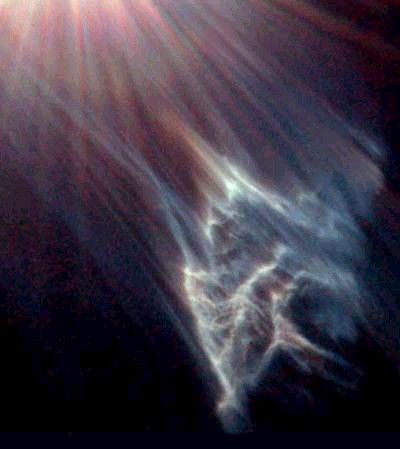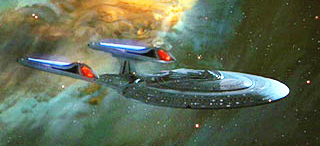Summary
To drive a motorised land vehicle in public you need to have passed a test of some sort. To take to the air in control of airborne transport you first need a private pilot’s licence, for which the tests are even more demanding. To launch out into the seaways of the world you need no qualifications whatsoever; anyone who can get hold of a boat is free to plough straight into busy harbours, estuaries, even the major marine traffic lanes, without any training or certification to their name.
So what’s the situation ‘out there’, in the deep dark reaches of interstellar space? Is there any form of regulation that requires a would-be Buck Rogers or Captain Kirk to achieve some specific level of proficiency before they can ‘boldly go’? Does the Final Frontier have frontier guards who can pull you in and check your credentials as you negotiate that hyperspace bypass or cruise down Galactic Route 66?
At first sight it would seem not. It appears that anyone – at least, any major government or corporate body with the necessary financial clout – can blast off into space for any distant twinkling destination, without a by-your-leave or authorisation of any sort.
But maybe that’s an illusion – we don’t seem to be out there, do we? And with all our techno-wizardry we don’t seem to have any plans to be out there any time soon. Of course we can offer all sorts of reasons why that’s so; perhaps those reasons are themselves the test that we have yet to pass …
—————————————————————————————————–
Ground Rules
 This post explores the possibility that, just like Stephen Hawking’s Chronology Protection Conjecture (see previous post), the universe has some form of Cosmic Aptitude Test built into it that ensures that any species blazing the space-trails first understands certain basic principles. That’s not so unlikely as it might sound – very plausible, in fact. And we can see the necessary aptitude training going on around us right now.
This post explores the possibility that, just like Stephen Hawking’s Chronology Protection Conjecture (see previous post), the universe has some form of Cosmic Aptitude Test built into it that ensures that any species blazing the space-trails first understands certain basic principles. That’s not so unlikely as it might sound – very plausible, in fact. And we can see the necessary aptitude training going on around us right now.
Let’s sneak a look in on Lecture Hall B …
“Today, class, we’re going to revisit Young’s two-slit experiment. You’ll recall that this is where individual photons of light pass through two slits simultaneously as waves distributed in space, then land on a screen as localised particles. You’ll also recall that the late great Nobel physicist Richard Feynman told us that everything we need to know about quantum mechanics can be learned from the two-slit experiment.”
“So Professor, does the two-slit experiment tell us how a widely-distributed wave becomes a localised particle?”
 “Son, wave-particle duality is just one of life’s great mysteries that you have to learn to live with. We get along just fine if we think of light either as a wave or as a particle, but never as both at once.”
“Son, wave-particle duality is just one of life’s great mysteries that you have to learn to live with. We get along just fine if we think of light either as a wave or as a particle, but never as both at once.”
“But Professor, if Feynman was right, surely that duality is telling us something really important …”
And in Lecture Hall C …
“Ok class, now remember that if two electrons are ‘entangled’, this means that they can be many miles apart but if we tweak one then the other one will respond immediately – faster than the speed of light. This tells us that there are connections between particles of matter that we don’t understand at all – and those connections aren’t subject to the usual rules of time and space.”
And in Lecture Hall D …
“Einstein taught us that gravity isn’t a force of attraction between two objects. Rather, it’s one massive object – say, the earth – causing a distortion, a dent, in spacetime and another object – say, the moon – following the curves of that distorted spacetime. That’s what keeps the moon in its orbit around the earth, like a marble rolling round inside a bowl.”
“Professor, what does it mean that ‘spacetime is curved’? What is spacetime made of, that it can be shaped? And what is it about the makeup of matter, like the particles in our planet, that causes it to shape spacetime? What is matter made of, that makes it do that? How can an atom in my sweatshirt be contributing to curvature of space that attracts another galaxy from billions of light years away?”
“So many questions, Lucy. ‘Spacetime is curved’ means exactly what it says: it has dents in it, so that objects like the moon roll round like a marble in a bowl. That’s all we need to know. And there’s nothing special about your sweatshirt – every atom in our galaxy is adding to that curvature.”
“Exactly – but how? How can we claim to understand gravity if we don’t even know what causes it? And how could we ever find better ways of crossing space if we’ve not got the least idea what it actually is?”
“So many questions, Lucy …”
Graduate School
So what are the take-home lessons from this module on ‘New Science’ (i.e. ideas that have been around for the past 100 years)? What do we, as a species, need to take on board to qualify as fully-fledged (think about that term) travellers on the galactic superhighway?
 First, we need to recognise the interconnectedness of objects spatially far apart, in a way that transcends space and time. In fact, we need to recognise that everything is interconnected, both by gravitation and by more subtle bonds.
First, we need to recognise the interconnectedness of objects spatially far apart, in a way that transcends space and time. In fact, we need to recognise that everything is interconnected, both by gravitation and by more subtle bonds.
It’s a short step from that to ‘Everything is a single undivided whole’ – a view strongly endorsed by visionary Nobel physics nominee David Bohm.
Second, we need to see beyond the paradox of wave-particle duality to what that paradox is actually saying – that at a deeper level there are no particles, that everything is distributed, non-local (or more properly, alocal: i.e.the concept of here/there is something we’ve dreamed up to keep the perceptual books in order). There are clues all around us, if we could just take the blinkers off.
Third, we need to see that everything that we refer to as ‘matter’ is in fact spun out of waveform electromagnetic energy – swirls of energy, just like the ghostly forms that are conjured up by the mist on a late autumn day.
This then immediately raises the question: “How, and by whom or what, are those energy patterns created?” The issue of consciousness, evident in different ways in numerous quantum mechanics experiments and attested to by at least one Nobel laureate, has to be taken into consideration.
Certificate of Spaceworthiness
These aren’t airy-fairy New Agey concepts, they’re serious science – 21st Century science. And it’s a fair bet that key issues of interstellar travel won’t be cracked until we – at least, a critical mass of our species – have got our heads round these concepts as practical considerations, not just philosophical discussion points. In other words, we don’t get to leave home before we’re reasonably street-wise.
This looks very much to yours truly like some sort of aptitude test, a guarantee that no species is let loose on the galactic community without at least a working knowledge of the ground rules. Those rules don’t guarantee responsible behaviour, of course – but they do ensure an awareness of the true nature of things.
Enlightened self-interest applied to such concepts as: ‘everything is interconnected’ and ‘all material form – including us – is spun from energy flows directed by consciousness’ doesn’t necessarily ensure universal peace and harmony. But no-one can then claim “I didn’t know that what goes around comes around”. Individual/group responsibility steps up a notch when we go galactic, and the failsafe of higher physics ensures that we’re well aware of that.
To Sum Up ..
To introduce a radically new form of computer communications not covered by the TCP/IP protocol, we have to go to the layer below that. To introduce a radically new form of travel and communications – FTL (Faster Than Light) – we have to get to grips with the layer of reality that underlies our space-time model of how things work. In doing that we’re brought face to face with deeper truths regarding the nature of the universe.
How we respond to that is up to us, individually and as a species – but we can’t say we didn’t know. We qualify as galactic travellers by truly recognising and implicitly accepting that higher understanding. That’s part and parcel of the process that we refer to as ‘evolution’.
———————–
If you’d like to be informed about future posts: subscribe (free)
For further information on this subject, see this website.
———————–
Credits for space photos:
Earth and Moon: NASA & NSSDC
Dust Cloud by Merope (Pleiades): NASA
Spiral Galaxy NGC4414: Hubble Heritage Team (AURA/STScI/NASA)
———————–
Please note that comments significantly over 150 words will be truncated.
Longer comments of particular merit may be linked to on the ‘overspill’ page.
———————–






